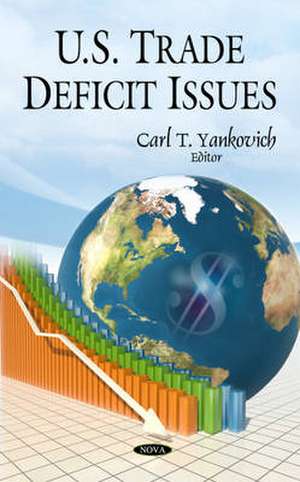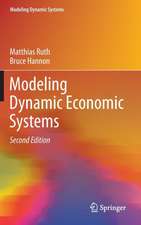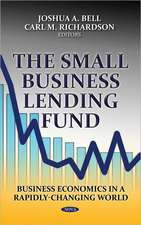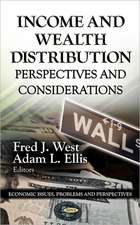U.S. Trade Deficit Issues
Editat de Carl T. Yankovichen Limba Engleză Hardback – 28 mar 2010
Preț: 595.55 lei
Preț vechi: 815.20 lei
-27% Nou
Puncte Express: 893
Preț estimativ în valută:
113.96€ • 118.98$ • 94.31£
113.96€ • 118.98$ • 94.31£
Carte disponibilă
Livrare economică 15-29 martie
Preluare comenzi: 021 569.72.76
Specificații
ISBN-13: 9781606920909
ISBN-10: 1606920901
Pagini: 129
Ilustrații: tables & charts
Dimensiuni: 160 x 231 x 12 mm
Greutate: 0.3 kg
Ediția:New.
Editura: Nova Science Publishers Inc
ISBN-10: 1606920901
Pagini: 129
Ilustrații: tables & charts
Dimensiuni: 160 x 231 x 12 mm
Greutate: 0.3 kg
Ediția:New.
Editura: Nova Science Publishers Inc
Cuprins
Preface; U.S. International Trade: Trends and Forecasts; The U.S. Trade Deficit: Causes, Consequences, and Cures; Is the U.S. Trade Deficit Caused by a Global Saving Glut?; Financing the U.S. Trade Deficit; U.S. Trade Deficit and the Impact of Rising Oil Prices; Index.















